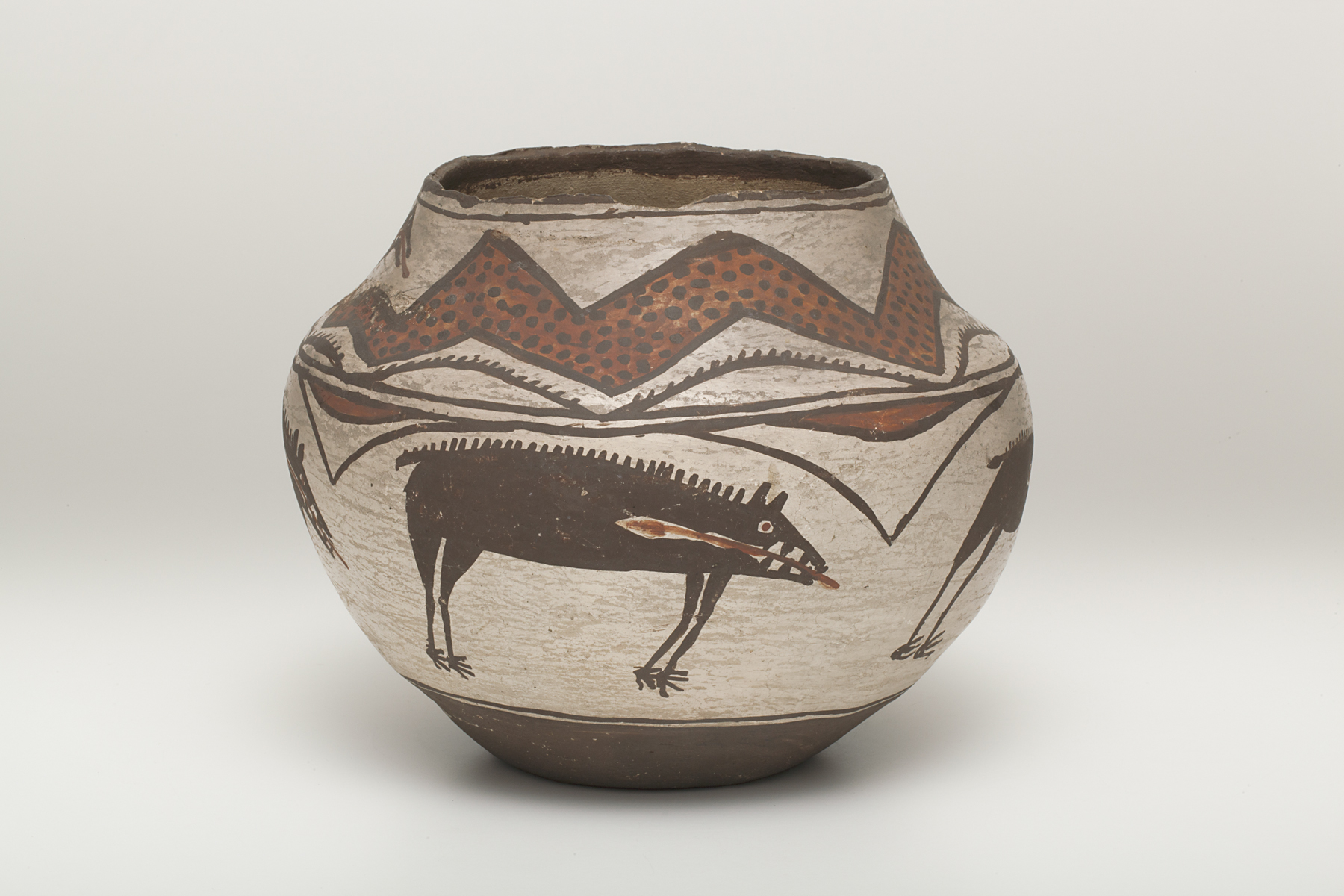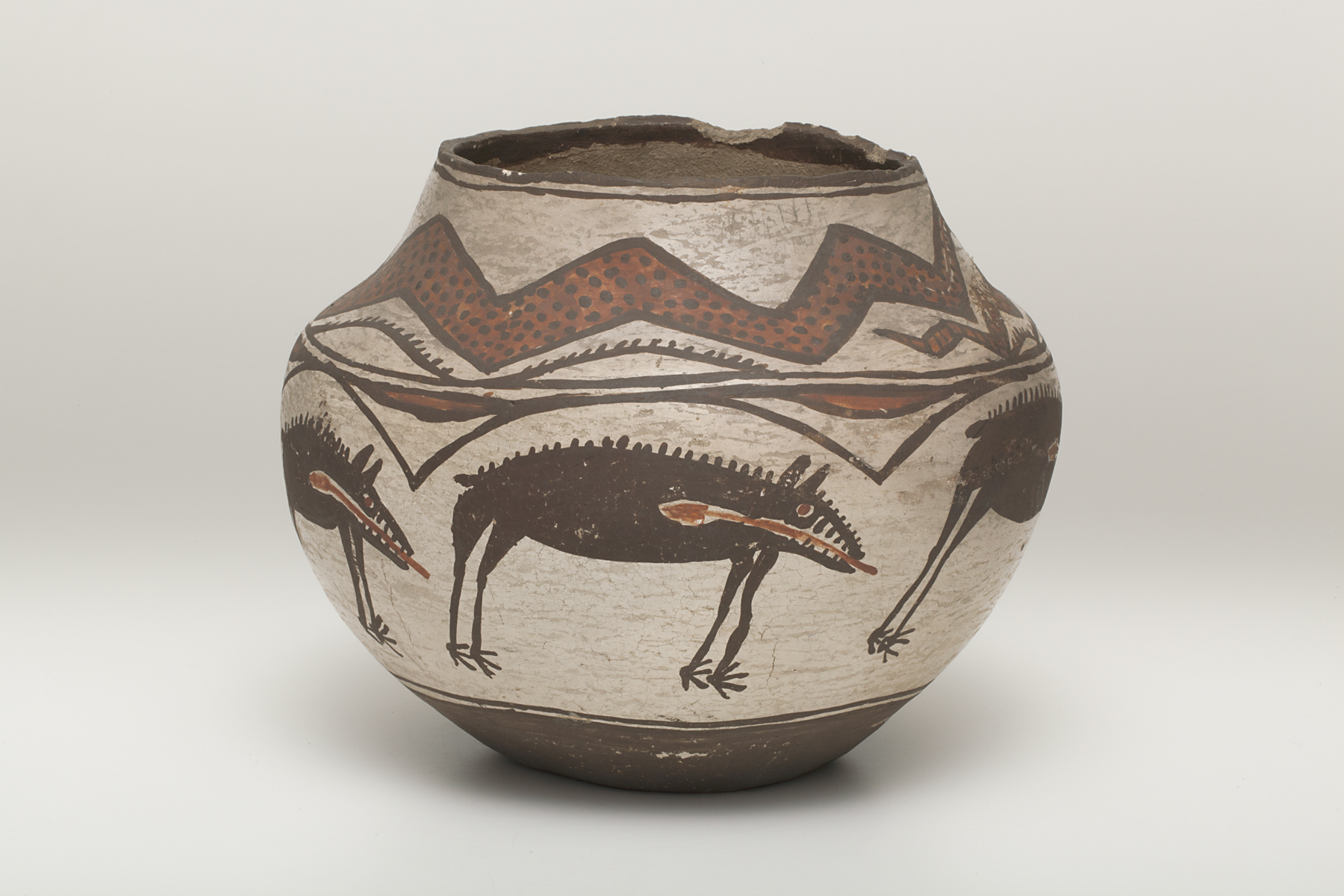jar, unrecorded A:shiwi artist
Artwork Overview
unrecorded A:shiwi (Zuñi) artist, artist
jar,
late 1800s
Where object was made: New Mexico Territory (present-day New Mexico), United States
Material/technique: ceramic; paint
Dimensions:
Object Height/Diameter (Height x Diameter): 22.5 x 28 cm
Object Height/Diameter (Height x Diameter): 8 7/8 x 11 in
Object Height/Diameter (Height x Diameter): 22.5 x 28 cm
Object Height/Diameter (Height x Diameter): 8 7/8 x 11 in
Credit line: Gift of James K. Allen
Accession number: 2007.4628
Not on display
If you wish to reproduce this image, please submit an image request






